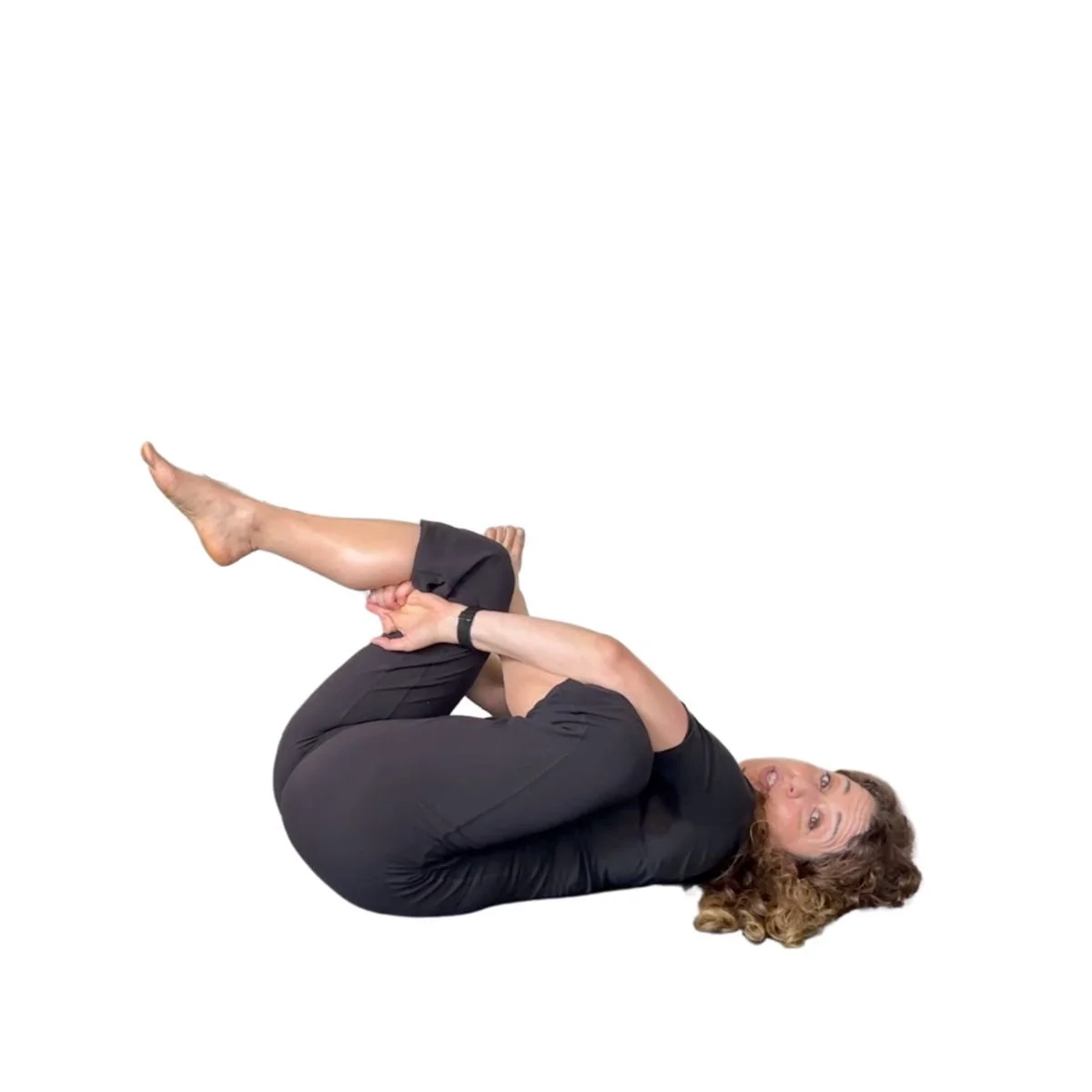Loosen Glute and Hip Muscles with the Figure 4 Stretch
Table of Contents
What Is a Figure 4 Stretch
The Figure 4 Stretch is a static stretch that targets the Hips, Glutes and Low Back. This is a popular stretch due to its versatility of being performed both in a seated and standing position. Keep reading to learn more about the Figure 4 Stretch.
How to Do a Figure 4 Stretch
Follow these steps to learn how to perform the Figure 4 Stretch from a standing position.
Lie on your back on the floor with your knees bent.
Cross your left foot over your right knee.
Thread your hands through to the back of your right thigh. Link your hands together.
Gently pull your leg in towards you. Hold for 30 seconds.
Repeat on the other leg.
Figure 4 Stretch Benefits
The benefits of the Figure 4 Stretch are what contribute to its popularity. The Figure 4 Stretch is beneficial because it targets three major muscle groups while maintaining one position. As well, the Figure 4 Stretch also has the same benefits that any static stretch does, including aiding in recovery, increasing flexibility and range of motion and reducing muscle tightness and discomfort.
Figure 4 Stretch Form
When performing the Figure 4 Stretch it is important to keep both shoulder blades on the floor and ensure that the shin of the leg being stretched is coming horizontally across the body. Additional tips include only stretching to the point of slight discomfort.
Figure 4 Stretch Muscles Worked
The Figure 4 Stretch targets the muscles in the Hips, Glutes and Low Back. Specifically, the Figure 4 Stretch targets mainly the Gluteus Medius and the Piriformis, a small muscle in the hips that is easily irritated from overuse.
Why Is the Figure 4 Stretch Useful
The Figure 4 Stretch is useful because it targets the Piriformis. When the Piriformis becomes inflamed from overuse it can become swollen and painful. The swelling of the Piriformis can irritate the Sciatic Nerve, which allows pain to migrate into the hips and the glutes. As a result, the Figure 4 Stretch is a great option for runners to relieve tension and tightness in the hips and the glutes.
Figue 4 Stretch Variations
Modified Figure 4
The Modified Figure 4 follows the same instructions as the original Figure 4 Stretch. The only difference is that you don't need to keep the leg elevated from the ground. Instead, it can be positioned on the ground while you cross your foot over to the opposite knee.
Seated Figure 4 Stretch
The seated figure 4 stretch is a modification of the traditional stretch that allows for targeted flexibility training while seated, making it ideal for individuals who may have difficulty with ground exercises. It focuses on relieving tension in the lower back, hips, and glutes, and can be performed anywhere with a chair, making it a convenient options for those with limited mobility.
Standing Figure 4 Stretch
The standing figure 4 stretch is a versatile modification that targets the hips and glutes, improving balance and flexibility, while providing an opportunity to strengthen the supporting leg.
Figure 4 Stretch Alternatives
Which Exercises Could Help Enhance Your Performance in the Figure Four Pose
Don't forget to incorporate dynamic stretches, such as hip mobility exercises, into your workout routines as part of your warm up.
Do You Experience Pain When Doing Figure 4 Stretch?
If you're experiencing pain or any type of discomfort while performing the figure 4 exercise, we recommend visiting a doctor or physical therapist so they can troubleshoot what is going on.
Many individuals tend to be extremely tight in the hip muscles. This can occur due to tightness in the hip flexors, adductors, and groin area. If tightness and stiffness is what you're experiencing, start mobility work slowly and less deeply into positions, remember to gradually build up.


